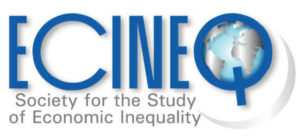Physics-inspired analysis of the two-class income distribution in the USA in 1983-2018
Working Paper 2023-651
Abstract
The first part of this paper is a brief survey of the approaches to economic inequality based on ideas from statistical physics and kinetic theory. These include the Boltzmann kinetic equation, the time-reversal symmetry, the ergodicity hypothesis, entropy maximization, and the Fokker-Planck equation. The origins of the exponential Boltzmann-Gibbs distribution and the Pareto power law are discussed in relation to additive and multiplicative stochastic processes. The second part of the paper analyzes income distribution data in the USA for the time period 1983-2018 using a two-class decomposition. We present overwhelming evidence that the lower class (more than 90% of the population) is described by the exponential distribution, whereas the upper class (about 4% of the population in 2018) by the power law. We show that the significant growth of inequality during this time period is due to the sharp increase in the upper-class income share, whereas relative inequality within the lower class remains constant. We speculate that the expansion of the upper-class population and income shares may be due to increasing digitization and non-locality of the economy in the last 40 years.
Authors: Victor Yakovenko, Danial Ludwig.
